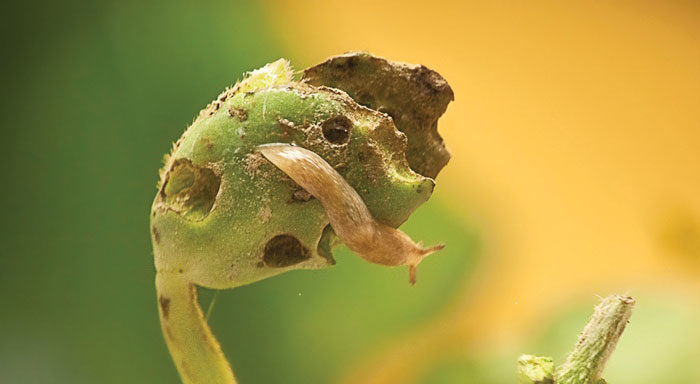No-Till Farmer
Get full access NOW to the most comprehensive, powerful and easy-to-use online resource for no-tillage practices. Just one good idea will pay for your subscription hundreds of times over.

EARLY DAMAGE. Slugs attack soybeans initially by cratering cotyledons as the plant first emerges from the soil. Image: Penn State University
No-tillers faced with prolonged wet conditions after planting should be alert to possible corn and soybean seedling damage inflicted by slugs.
Iowa State University entomologists say slugs affect no-till fields in particular because increased residue provides a stable, cool and damp environment for the soft-bodied mollusks. Penn State experts agree and offer extensive discussions of slug life cycles, scouting and control methods.
Slugs can be serious pests to many crops grown in no-till or other reduced tillage environments and can feed directly on seeds or seedlings, leading to poor stands. They can damage seeds, roots, stems, leaves and flowers, but feeding generally tends to be greater on leaves close to the soil on young plants.
Slugs are hermaphroditic – individuals have both male and female reproductive organs – but usually mate with one another to reproduce, according to Penn State guides on slugs as field pests. Mating, egg-laying, hatching and development are not well synchronized even within a single species of slugs. Several stages may be present in newly planted fields, meaning slug activity is difficult to predict reliably.
The gray garden slug, which appears to have a more synchronized life cycle than other species, is likely to be a common pest in no-till fields as large numbers of this species emerge from spring egg hatches and are often associated with crop damage. Juveniles grow through spring and summer, mature in late summer to early fall, mate and lay eggs before winter. A single gray garden slug can…